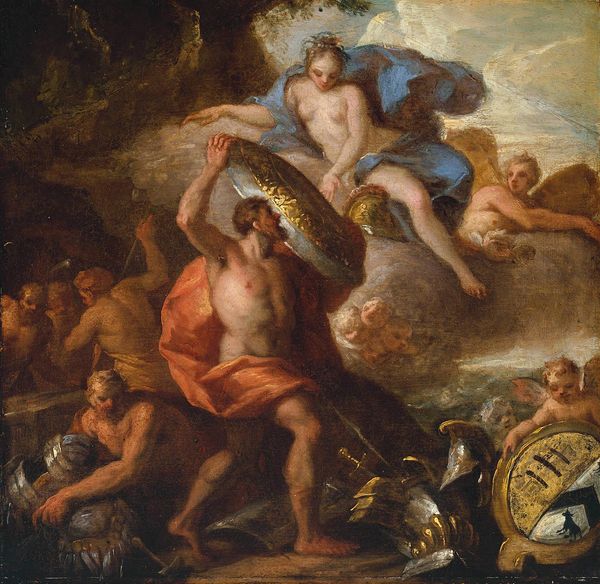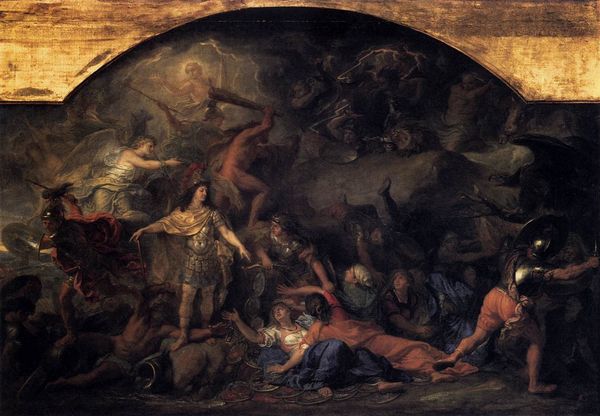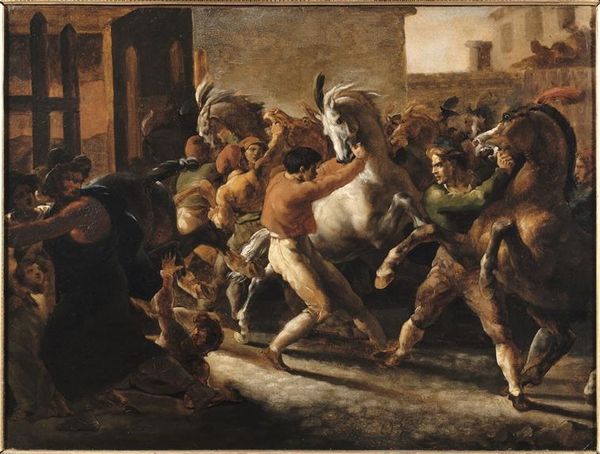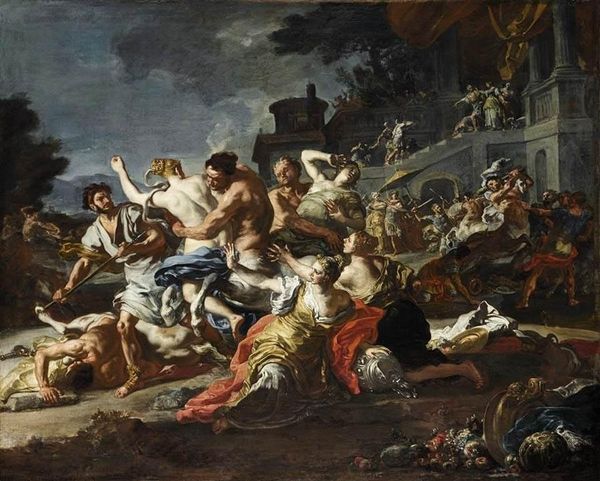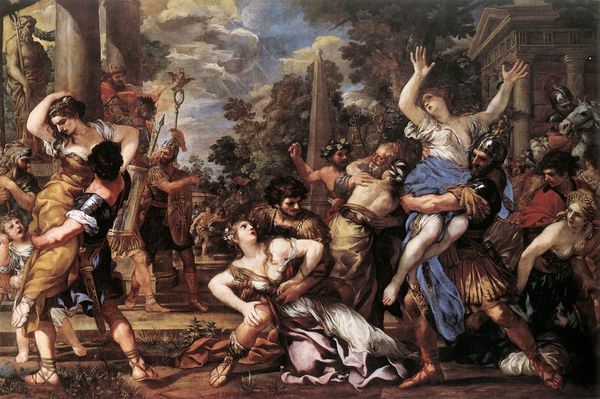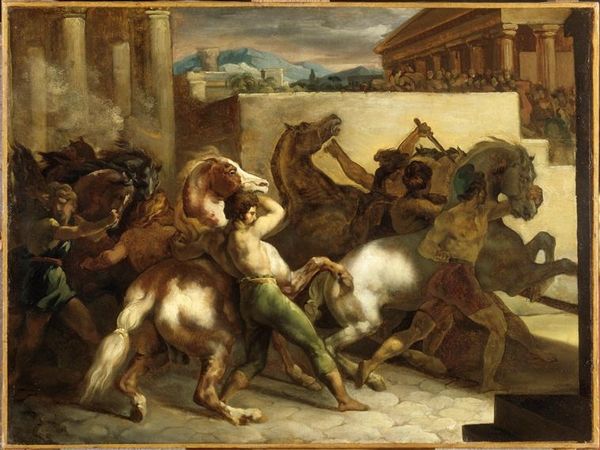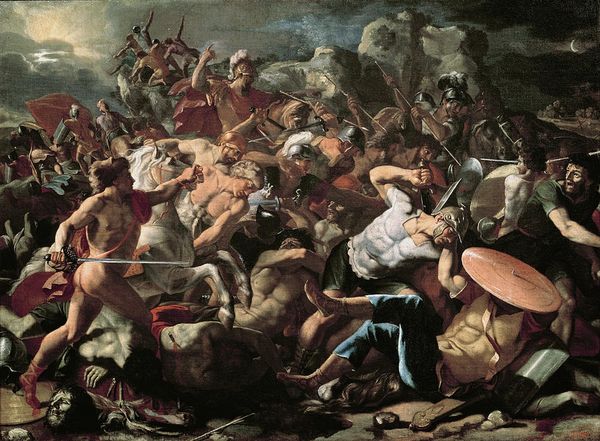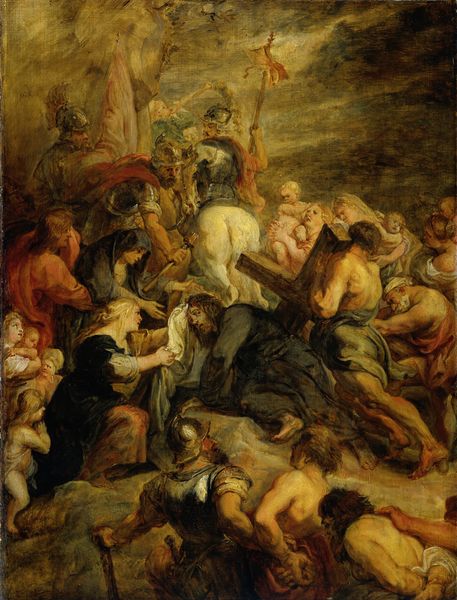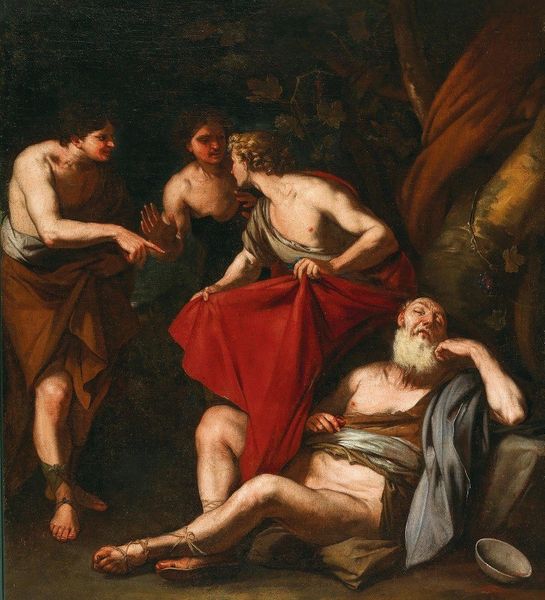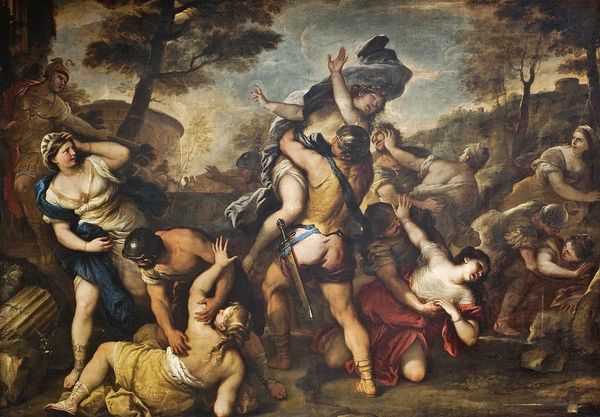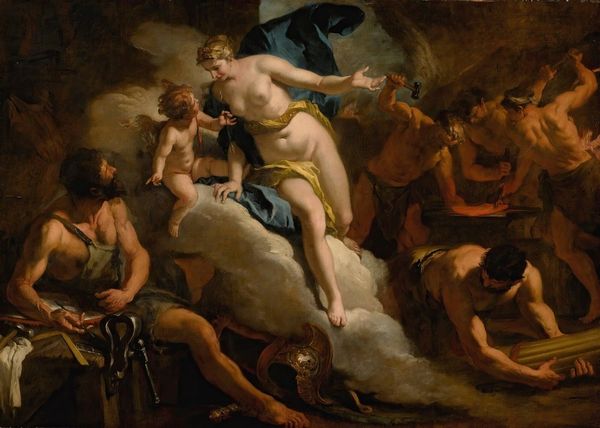
painting, oil-paint
#
venetian-painting
#
allegory
#
narrative-art
#
baroque
#
painting
#
oil-paint
#
figuration
#
oil painting
#
history-painting
Copyright: Public Domain: Artvee
Sebastiano Ricci created 'The Temptation of Saint Anthony' using oil paints to depict a saint's struggle against earthly desires. The painting’s dynamism arises from its complex composition and the artist's use of diagonals, which pull our eyes into the chaotic scene. The swirling array of figures, painted with a warm palette of earth tones, creates a sense of unease. Ricci employs dramatic contrasts of light and shadow, heightening the emotional intensity of the scene. This chiaroscuro technique draws attention to the corporeal forms of the tormentors, highlighting the saint's physical and psychological ordeal. The structural arrangement—the way figures are grouped and oriented—suggests a world in disarray. Ricci's painting can be seen as a challenge to traditional notions of spiritual purity and a reflection on the fragility of human will when confronted by base instincts. The interplay between form and content in 'The Temptation of Saint Anthony' invites us to question the boundaries between the sacred and the profane, and to contemplate the instability of meaning itself.
Comments
No comments
Be the first to comment and join the conversation on the ultimate creative platform.
